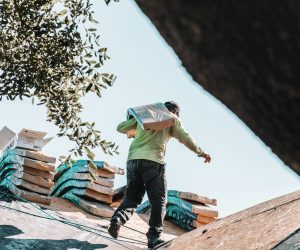Dealing with pigeons can be a persistent problem, causing health risks and property damage. For homeowners and business owners, it’s crucial to find pigeon control solutions that offer long-term results. While some methods provide quick fixes, only a few ensure lasting effectiveness.
The most promising option for lasting pigeon control is using pigeon birth control. This method, offered by pigeon control solutions by OvoControl, helps to manage pigeon populations without harming the birds, ensuring a humane and effective approach. Other deterrents, such as high-frequency sound devices and physical barriers, are also effective but may require professional installation and maintenance to ensure continued success.
Effective pigeon control involves understanding pigeons’ behavior and assessing the impact of their infestation. Combining multiple methods, like chemical repellents and physical barriers, can yield better results. Choosing professionals who prioritize humane and long-term solutions is key to keeping your property pigeon-free.
Key Takeaways
- Long-term pigeon control methods are more effective.
- Pigeon birth control provides a humane solution.
- Combining different methods ensures better results.

Assessing Pigeon Behavior and Infestation Impact
It is important to understand pigeon behavior and the damage they can cause. Health risks from pigeon infestations are significant, necessitating professional control.
Understanding Pigeon Behavior
Pigeons are social birds that prefer urban areas where food and shelter are abundant. They often nest on buildings, under bridges, and on rooftops. Their nesting habits can cause structural issues over time.
These birds are known for their homing instincts, often returning to the same site if not properly deterred. Their constant presence can lead to the accumulation of droppings, which is a primary concern.
Recognizing these behaviors helps in devising effective control strategies, including habitat modification and the use of deterrents.
Evaluating Pigeon-Related Damage
Pigeon infestations can cause significant property damage. Their acidic droppings can corrode building materials, leading to costly repairs over time. This is particularly true for historic structures with delicate surfaces.
Nesting materials can clog drains, create fire hazards, and block ventilation systems. Birds often dislodge roof tiles, contributing to leaks and water damage. Addressing these issues promptly is essential for maintaining structural integrity.
Property owners should inspect for physical signs of damage regularly. Droppings, nesting materials, and obvious structural harm are indicators of infestation that require attention.
Health Risks of Pigeon Infestations
Health risks associated with pigeon infestations are substantial. Pigeon droppings can harbor bacteria like Salmonella and E. coli, posing a threat to human health. Inhaling dust from dried droppings can lead to respiratory diseases such as histoplasmosis.
Pigeons can also carry parasites like mites and ticks, which can infest buildings and spread to humans. These health risks underscore the importance of controlling and preventing infestations.
Regular cleaning and prompt removal of droppings are critical in minimizing these dangers. Implementing control measures can significantly reduce health hazards.
The Significance of Professional Pigeon Control
Professional pigeon control provides effective, long-term solutions. Experts assess the extent of the infestation and implement targeted strategies to mitigate risks.
Using methods such as bird netting, spikes, and shock tracks can deter pigeons from roosting and nesting. Professionals also offer ongoing maintenance to ensure pigeons do not return.
Their expertise ensures humane and effective control, protecting both property and public health. Relying on professionals can save time, reduce damage, and minimize health risks associated with pigeon infestations.
Long-Term Pigeon Control Solutions
Effective long-term pigeon control combines physical barriers, biological methods, environmental changes, and community involvement. These strategies aim to reduce pigeon populations humanely and sustainably.
Physical Barrier Methods
Physical barriers are essential to prevent pigeons from roosting and nesting. Bird spikes and bird netting are common methods used to block pigeons from landing on flat surfaces and ledges. Bird wire is another option, which involves installing thin, tensioned wires in areas where pigeons perch. These barriers make it uncomfortable for pigeons to settle, thus discouraging them from returning.
Implementing these methods requires a careful evaluation of the site to ensure comprehensive coverage. Regular maintenance of these barriers is crucial to their effectiveness. Poorly maintained barriers can fail and provide pigeons with an opportunity to return.
Biological and Chemical Strategies
Biological and chemical strategies involve controlling the pigeon population through non-lethal means. One such method is the use of pigeon birth control, like OvoControl. This product reduces the pigeon population by interfering with their reproduction process. This strategy is ideal for large areas where other methods might be impractical or too costly.
Pigeon deterrents that use scents or tastes can also be effective, although they may need reapplication and constant monitoring. These solutions are considered humane and environmentally friendly, providing long-term results without causing harm to the pigeons or other wildlife.
Behavioral and Environmental Modification
Changing the environment and behavior of pigeons can significantly lessen their presence. Reducing food sources by discouraging the public from feeding pigeons is a simple yet effective measure. Modifying habitats by sealing entry points to structures can prevent pigeons from nesting.
Implementing strategies like these requires community awareness and cooperation. Education on the impacts of feeding pigeons and how to create less inviting habitats for them can lead to more effective population control over time. Regular sanitation and maintenance play a significant role in this approach.
Legislation and Community Involvement
For long-term pigeon control, legislation and community involvement are crucial. Local laws can regulate the feeding of pigeons and require property owners to implement deterrent measures. Communities can work together to create policies that ensure public spaces remain pigeon-free.
Community engagement programs can educate residents about humane pigeon control methods and the importance of maintaining such practices. Public consultations can help develop customized strategies that address specific local challenges. Collaboration between pest control experts and the community can lead to sustainable, long-term solutions.
By integrating these approaches, a community can effectively manage pigeon populations while maintaining aesthetic appeal and ensuring a humane treatment of the birds.
Conclusion
Different pigeon control methods can offer long-term results. Natural methods, like habitat modification and birth control, provide sustainable and humane solutions. Chemical repellents may act faster, but they can cause ecological harm.
Choosing the right method depends on the specific needs and context of the area. Using integrated approaches can create a balanced and effective pigeon management strategy. For more insights on effective practices, consider reading about sustainable pigeon deterrence methods and integrated pigeon management.


